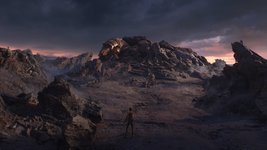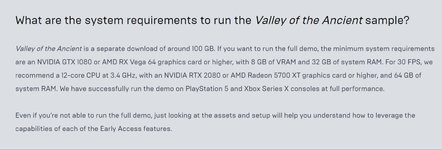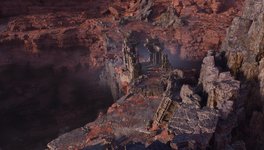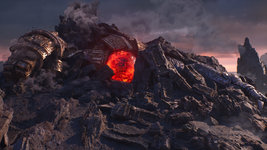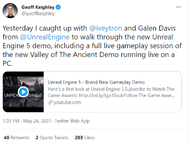این دمو هم توسط یک تیم کوچیک چند نفره ساخته شده با film quality assets
قابلیت های مهم UE5
Nanite
Create games with massive amounts of geometric detail with Nanite, a
virtualized micropolygon geometry system. Directly import film-quality source art comprised of millions of polygons—anything from ZBrush sculpts to photogrammetry scans—and place them millions of times, all while maintaining a real-time frame rate, and without any noticeable loss of fidelity.
Nanite intelligently streams and processes only the detail you can perceive, largely removing poly count and draw call constraints, and eliminating time-consuming work like baking details to normal maps and manually authoring LODs—freeing you up to concentrate on creativity.
Lumen
Lumen is a fully
dynamic global illumination solution that lets you create dynamic, believable scenes where indirect lighting adapts on the fly to changes to direct lighting or geometry—for example, changing the sun’s angle with the time of day, turning on a flashlight, or opening an exterior door.
With Lumen, you no longer have to author lightmap UVs, wait for lightmaps to bake, or place reflection captures; you can simply create and edit lights inside the Unreal Editor and see the same final lighting as when the game is run on console.
Open worlds
One of our ongoing goals is to make the creation of open worlds faster, easier, and more collaborative for teams of all sizes. With Unreal Engine 5, a new
World Partition system changes how levels are managed and streamed, automatically dividing the world into a grid and streaming the necessary cells.
Team members can now also simultaneously work on the same region of the same World without treading on each other’s toes, thanks to a new
One File Per Actor system, while with
Data Layers, you can create different variations of the same World—such as daytime and nighttime versions—as layers that exist in the same space.
One of our ongoing goals is to make the creation of open worlds faster, easier, and more collaborative for teams of all sizes. With Unreal Engine 5, a new
World Partition system changes how levels are managed and streamed, automatically dividing the world into a grid and streaming the necessary cells.
Team members can now also simultaneously work on the same region of the same World without treading on each other’s toes, thanks to a new
One File Per Actor system, while with
Data Layers, you can create different variations of the same World—such as daytime and nighttime versions—as layers that exist in the same space.
Animation
Author incredibly detailed characters in dynamic, real-time environments with Unreal Engine 5’s powerful animation toolset. Working in context, you can iterate faster and more accurately, without the need for time-consuming round-tripping.
Artist-friendly tools like
Control Rig let you quickly create rigs and share them across multiple characters; pose them in Sequencer and save and apply the poses with the new
Pose Browser; and easily create natural movement with the new
Full-Body IK solver. And with
Motion Warping, you can dynamically adjust a character’s root motion to align to different targets with a single animation.
MetaSounds
With UE5, we’re introducing a
fundamentally new way of making audio. MetaSounds is a high-performance system that offers complete control over audio DSP graph generation of sound sources, letting you manage all aspects of audio rendering to drive next-generation procedural audio experiences.
MetaSounds is analogous to a fully programmable material and rendering pipeline, bringing all the benefits of procedural content creation to audio that the Material Editor brings to shaders: dynamic data-driven assets, the ability to map game parameters to sound playback, huge workflow improvements, and much more.
Editor workflow
In UE5, the Unreal Editor gets a makeover, with an
updated visual style,
streamlined workflows, and
optimized use of screen real estate, making it easier, faster, and more pleasing to use.
To free up more space for viewport interactions, we’ve added the ability to easily summon and stow the Content Browser and to dock any editor tab to the collapsible sidebar. You can now quickly access frequently used properties in the Details panel with a new favoriting system, while the new Create button on the main toolbar lets you easily place Actors into your world. There’s also a streamlined, easier workflow for creating new projects.
